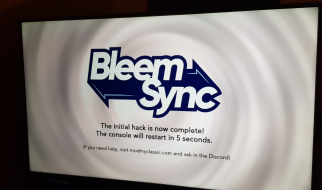 Publisher: Arcane Wonders Number of Players: 2 Play time: 10?30mins Age Guide: 8+
Publisher: Arcane Wonders Number of Players: 2 Play time: 10?30mins Age Guide: 8+
[Originally published on www.tabletoptribe.com]
I played a lot of Chess when I was younger. Up until my mid teens it was my board game of choice and I would play regularly with my father, until I beat him one day. We never played together again after that. Considering he was a man that had been known to flip Monopoly and Risk boards, I think he took the loss rather well.
However, that wasn?t what made me fall out of love with Chess (the opposite in fact). Rather the love affair ended partly due to the brain drain of it all, and partly the time sink when playing with anyone prone to Analysis Paralysis. But mostly it was the nature of the game itself: at a certain level it became a progression of set opening moves and counter-moves. It lost its spontaneity.
Perhaps I was just too lazy to learn all those set pieces? Besides, I wanted to play a game, not study it as a discipline.
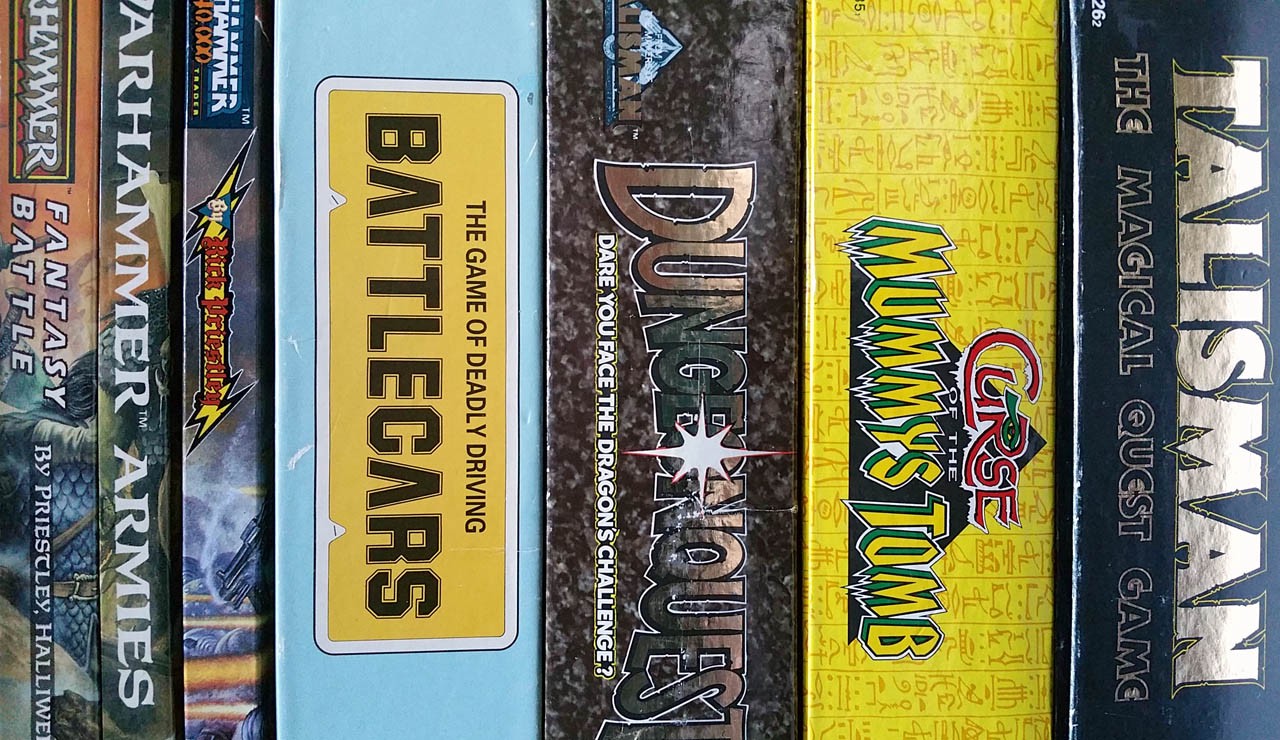 For me at least, Chess was always going to have its work cut out in the 1980s?
For me at least, Chess was always going to have its work cut out in the 1980s?
It?s also possible I was becoming increasingly distracted by 1980s gaming chic. RPGs like Dungeons and Dragons, Star Frontiers and Call of Cthulhu, tabletop miniatures games like Warhammer, and boardgames like Talisman and Battlecars. I didn?t want abstract battle, blood and guts any more. Poor old Chess never stood a chance.
Nowadays I?m getting closer to the age my dad was when I thrashed him at Chess, and I?m ready once again for some abstract action to punctuate all the bloodshed, but strangely Chess still isn?t getting a look in. There are so many new abstract strategy games to choose from, and one of them has pretty much replaced the old classic for me. Its name is Onitama.
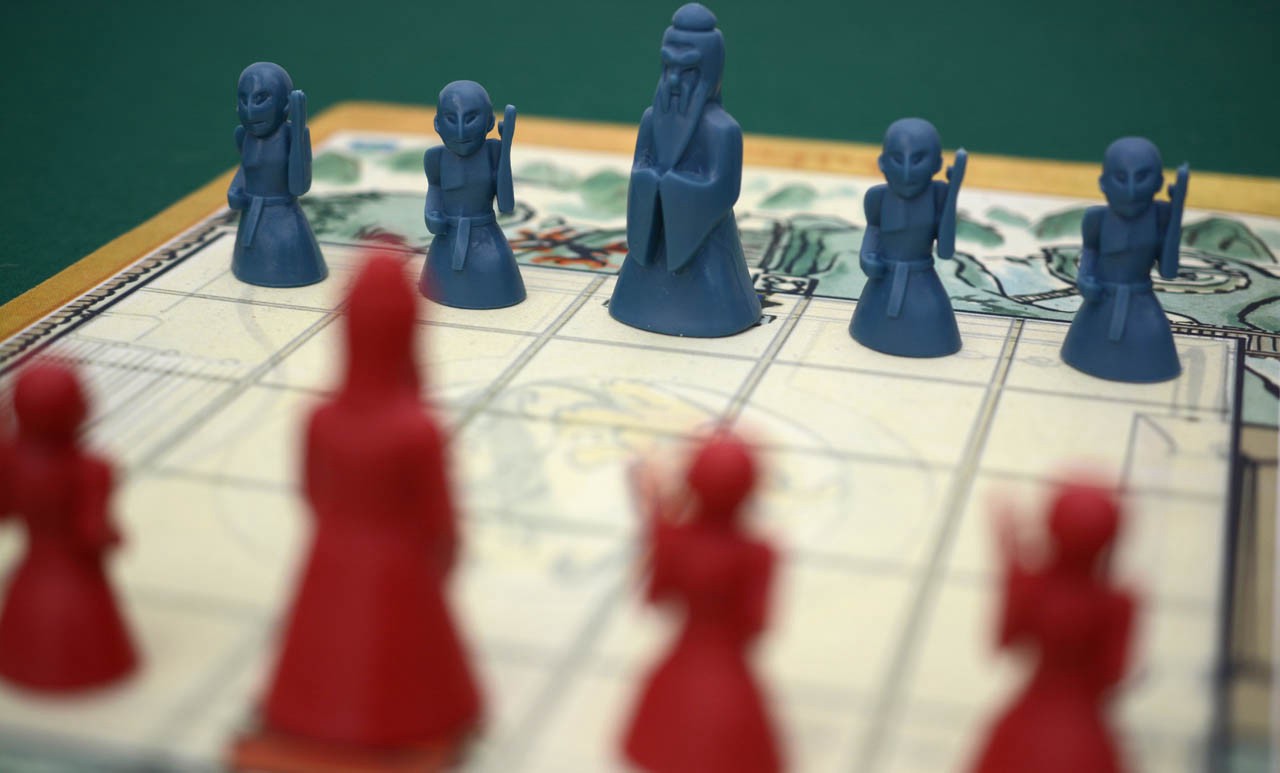
At first glance Onitama looks a little bit like a cut-down version of Chess: five pieces per side (one Master ? basically a King ? and four pawns), played on a board five squares by five. Despite the two different types of piece, each one can move in the same way, and this is where it gets seriously cool.
At the start of every game five tarot-sized cards are dealt from a deck of sixteen: two to each player and one between them as a neutral card. Each card shows a black square, representing the position of a piece, and a number of squares around it that show the possible moves that piece can make, in three different colours: Red for movement predominantly to the right, blue mainly to the left and green more symmetrically central.

Each card also features a small blue or red symbol in the bottom right hand corner, which dictates who goes first depending on the colour shown on the neutral card. Players take it in turns to select one of the two cards in front of them, move one of their pieces according to the movement allowed on the card, and then exchange that card with the neutral one between the players.
The winner is the first to either take their opponent?s Master, or place their own Master on the opposing player?s Temple Arch space (where each Master starts play.)
And that?s it.
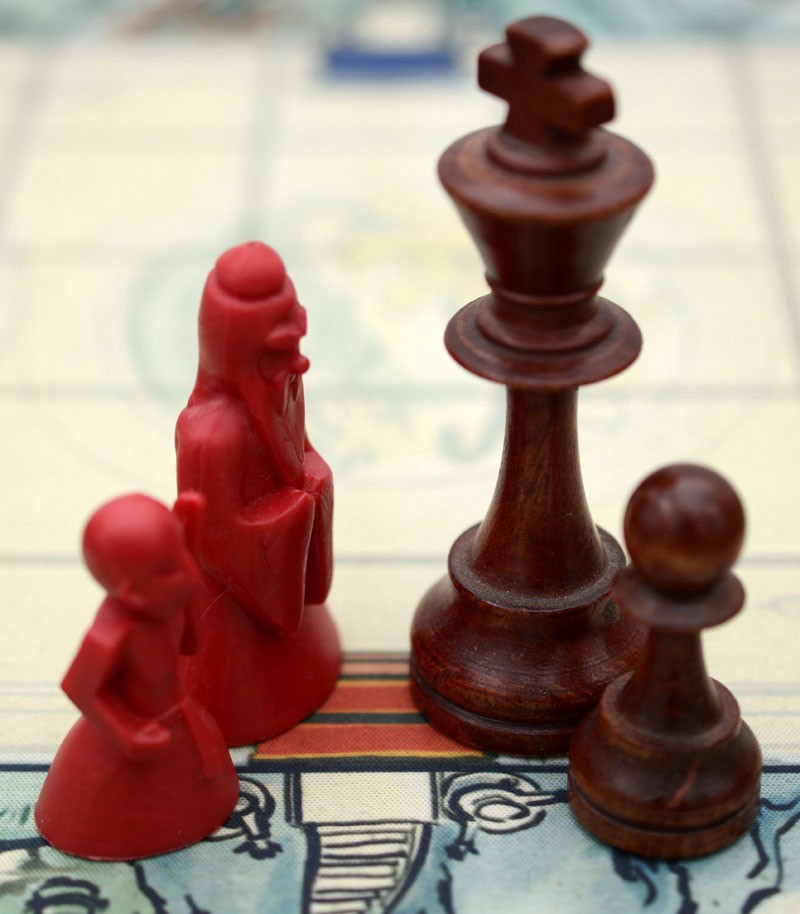 Bring it.
Bring it.
It?s simple to learn and teach, and yet the ensuing game play is thought-provokingly tactical, without ever getting bogged down in the paralysis that often occurs during Chess. Due to the ever-changing nature of movement, you soon discover that trying to think multiple moves ahead becomes futile as your opponent often chooses the opposite card to the one you?d thought. Their actual move might be identical regardless of which of their cards they play, but the resulting disposition of available cards might completely change the game?s landscape.
So even though each player?s turn is a thoughtful, tactical play, it tends to occur reasonably quickly as players often only think one move ahead. Try to foresee the possible permutations that can occur several moves ahead with just the combination of five cards that are on the table, and your brain may well melt out of your ears, so you simply try to make the best possible move based on what your opponent will have to work with on their next turn, and leave it at that. It?s wonderfully emergent, spontaneous tactical play.
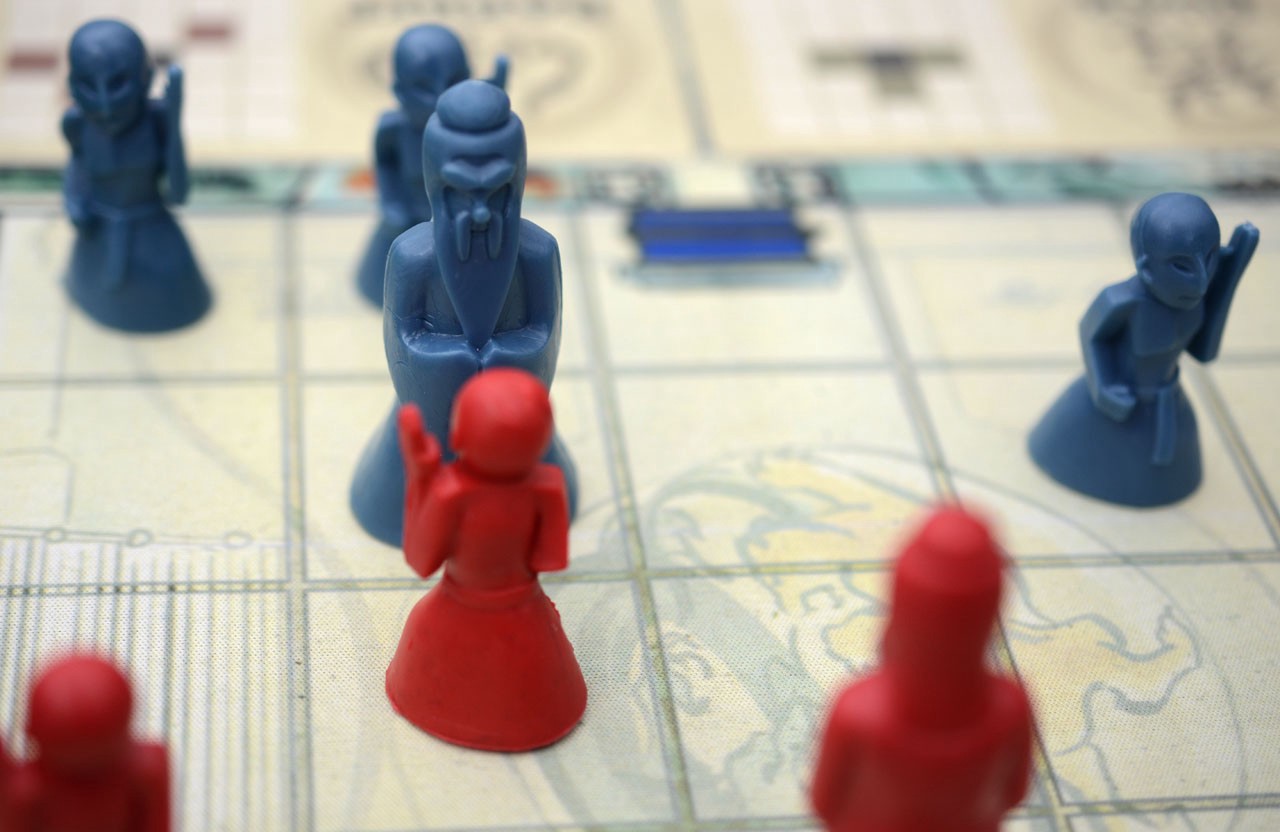
The upshot of this is that your game is unlikely to last more than half an hour, and is usually over in as little as ten minutes, sometimes less. As soon as it is, you find yourselves immediately setting up for a new game and shuffling those lovely big cards to dictate your brand new moves. It?s quick, fun and addictive game play that?s the perfect accompaniment to a cup of coffee or a pint of beer.
Talking of which, the components themselves are incredibly conducive to transport and quick-set up. The well-designed box is tall and thin and not too much trouble to put into a bag or rucksack, although if you really want to transport it then simply unbox everything and put the playing pieces in a jacket pocket, the cards in another, and roll up the board of thin printed neoprene and slip it into an inside jacket pocket.
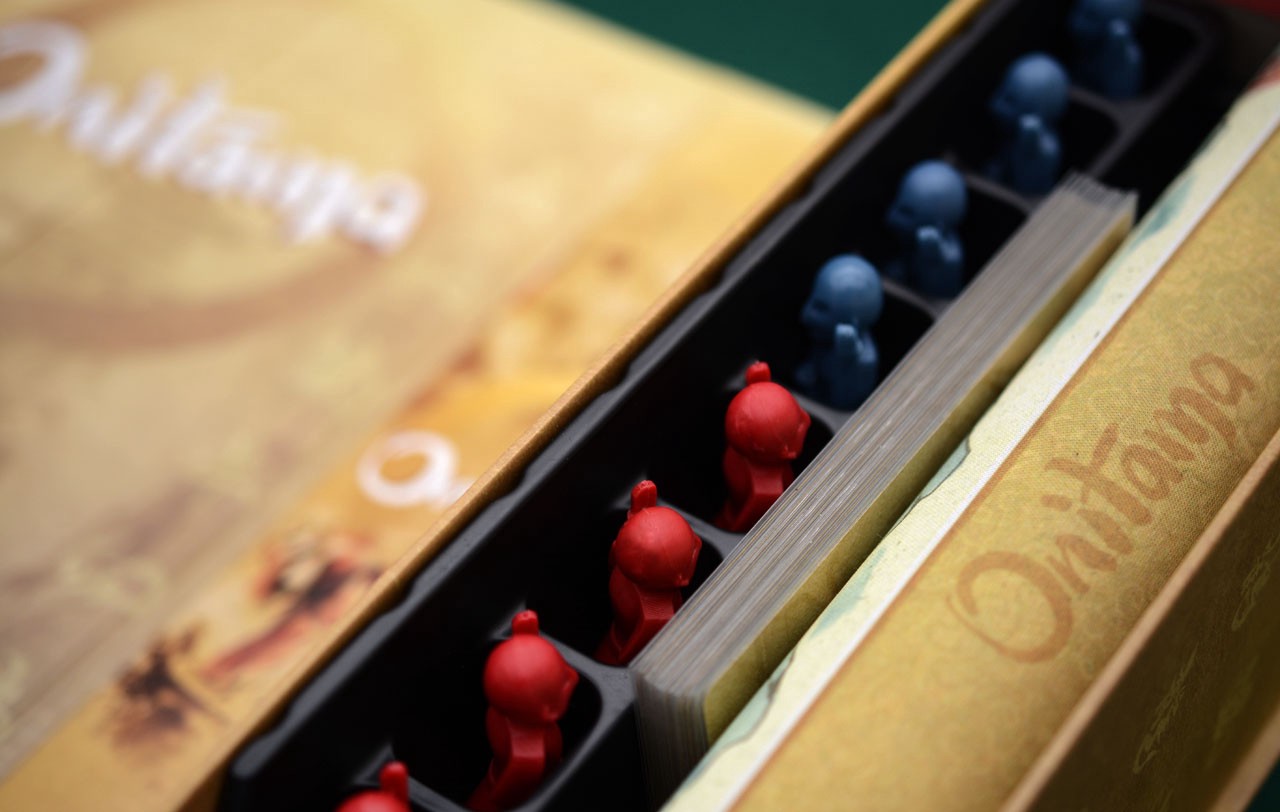
I can?t recommend Onitama enough. I suppose I?ve been slightly facetious in comparing it too closely to Chess, whose ardent fans will no doubt be champing at the bit to point out how much more depth and tactical play is available in the ancient game.
This is true, but it?s also the reason I prefer Onitama, which is a quick and easy two-player duel. Each game is novel and intriguing, and the play is brain-burning without it resulting in stagnation. The gameplay is emergent and unpredictable, and so doesn?t encourage too much analysis. Chess is a mental ordeal. I?m not saying I?ll never play it again ? it?s been too big a part of my early gaming life for that kind of heartless abandonment ? but it?ll be a rare special occasion that will bring it to the table. And lots of wine.
However, if you are a Chess lover, I suspect you?ll find a lot to love in Onitama too, as will any fan of tactical abstract games. Simply put, if you?re a fan of just games, then Onitama should be on your radar and wishlist.
Pros:
- Wonderfully simple to teach and learn
- Looks great and plays better
- Easy to transport
- It?s not Chess
Cons:
- It?s not Chess
- It?s not exactly cheap for what it is (25+)
![[REVIEW] Onitama (Or Why I Don’t Play Chess Any More)](https://911weknow.com/wp-content/uploads/2020/09/review-onitama-or-why-i-dont-play-chess-any-more-628x275.jpg)

